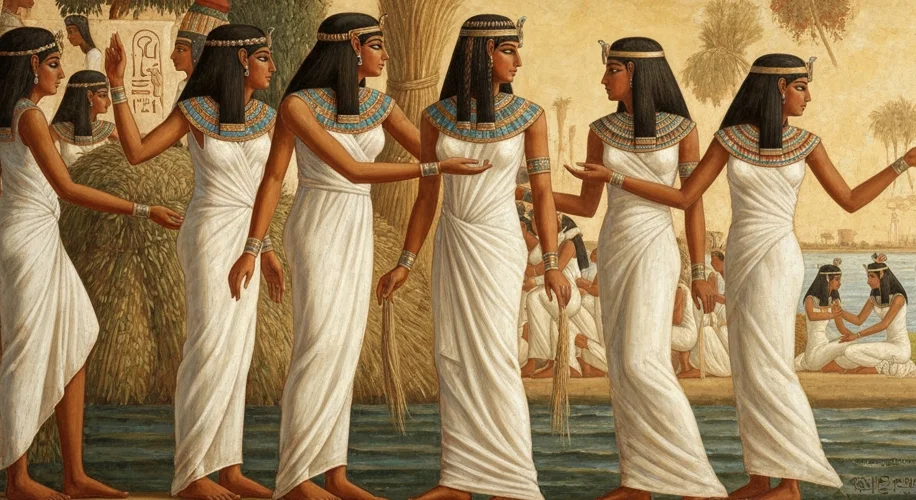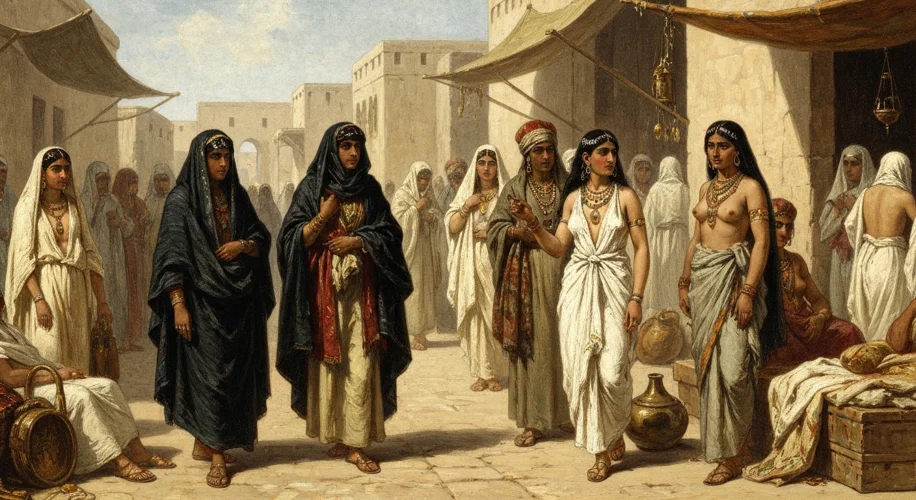The sands of Egypt, stretching back to antiquity, hold whispers of a civilization where attire, and by extension, modesty, painted a vastly different picture than what many associate with the land of pharaohs today.
Imagine the sun-drenched banks of the Nile, over 4,000 years ago. The art that adorns tomb walls and temple sanctuaries reveals a society with a comparatively liberal approach to dress, particularly for women. Figures of queens, goddesses, and ordinary women are often depicted in diaphanous linen kilts, sheath dresses, or simply adorned with jewelry and elaborate hairstyles. The emphasis wasn’t on concealment, but on status, beauty, and perhaps the practicalities of a warm climate.

Take, for instance, the New Kingdom period (circa 1550-1070 BCE). Art from this era showcases women wearing close-fitting, often sheer, white linen dresses. These garments, while revealing the form, were a testament to the skill of Egyptian weavers and the aesthetic sensibilities of the time. It wasn’t about exposing the body for shock value, but rather a cultural norm where the body, particularly the female form, was not inherently seen as something to be hidden.
The religious and cultural landscape played a significant role. While deities were often depicted with minimal clothing, reflecting a divine, unburdened state, everyday attire was influenced by social hierarchy and ritual. Cosmetics and elaborate wigs were common, signifying refinement and social standing. The concept of ma’at, representing truth, balance, and order, permeated Egyptian society, and while it dictated ethical behavior, its influence on sartorial modesty was far less restrictive than in later eras.
This relative freedom continued through the Ptolemaic and Roman periods, though Hellenistic and Roman influences did introduce new styles, including more draped garments. However, the fundamental Egyptian appreciation for decorative elements and less restrictive clothing persisted.
The dramatic shift began with the advent of Christianity and, more profoundly, the Arab conquests in the 7th century CE, bringing Islam to Egypt. The Quran and Islamic tradition emphasize modesty for both men and women, although the interpretation and implementation have varied across cultures and time.
In the early Islamic centuries, while Arab women often adopted veiling practices, the adoption in Egypt was gradual. Initially, local customs and the established cultural norms of Egypt influenced how Islamic teachings on modesty were integrated. However, over centuries, conservative interpretations began to gain more traction.

By the Ottoman period (1517-1805) and into the era of European colonialism, the prevalent styles leaned towards more concealing garments. The concept of the harem and the segregation of women in public spaces influenced dress codes. The hijab, the headscarf, became increasingly common, symbolizing piety and adherence to Islamic values. European colonial presence, paradoxically, sometimes reinforced these conservative trends as local elites sought to distinguish themselves from the colonizers, often by emphasizing traditional religious and cultural practices.
The 20th century saw further complexity. Nationalist movements in the early to mid-20th century often involved women participating in public life, sometimes adopting Western dress. However, the rise of Islamic revivalist movements, particularly from the 1970s onwards, led to a resurgence and often more stringent adherence to Islamic dress codes. Factors such as social conservatism, a desire to reconnect with religious identity in a rapidly modernizing world, and sometimes political statements all contributed to the widespread adoption of the hijab, niqab (face veil), and abaya (loose outer garment).
Today, the spectrum of modesty in Egypt is wide. While many women choose to wear headscarves and modest clothing as a personal expression of faith and cultural identity, others opt for Western attire. The evolution from the sheer linens of ancient Egypt to the diverse styles of modern Egypt is a powerful testament to the dynamic interplay of culture, religion, politics, and social change that has shaped Egyptian society for millennia.
It’s a journey that reminds us that modesty is not a static concept, but a continuously negotiated expression of identity, belief, and belonging, veiled and unveiled through the unceasing flow of time.

